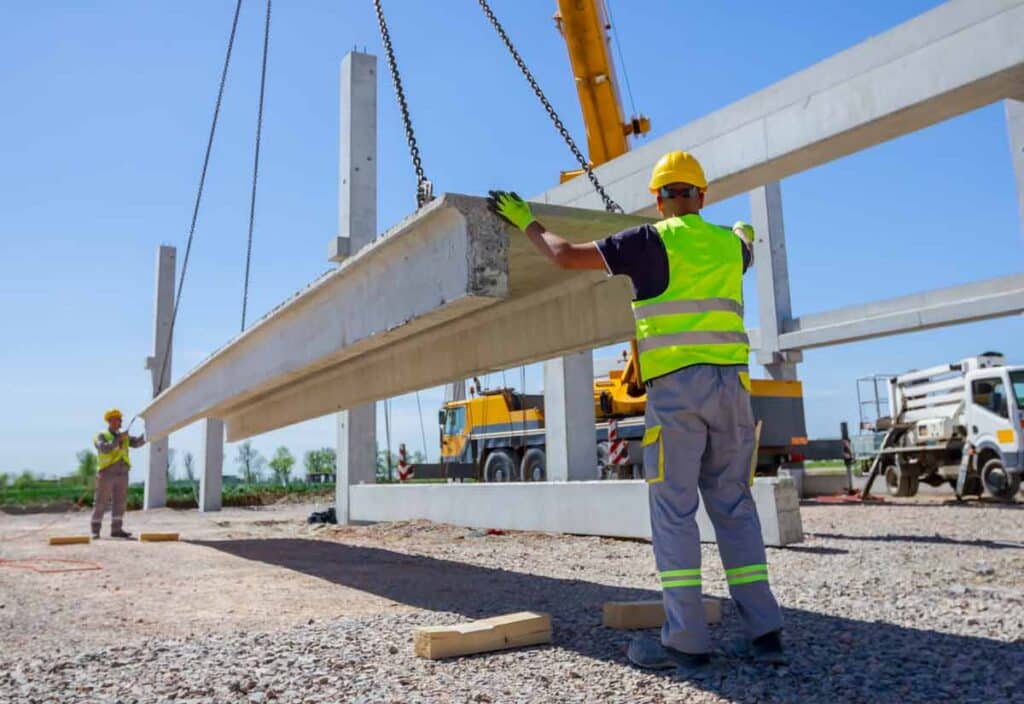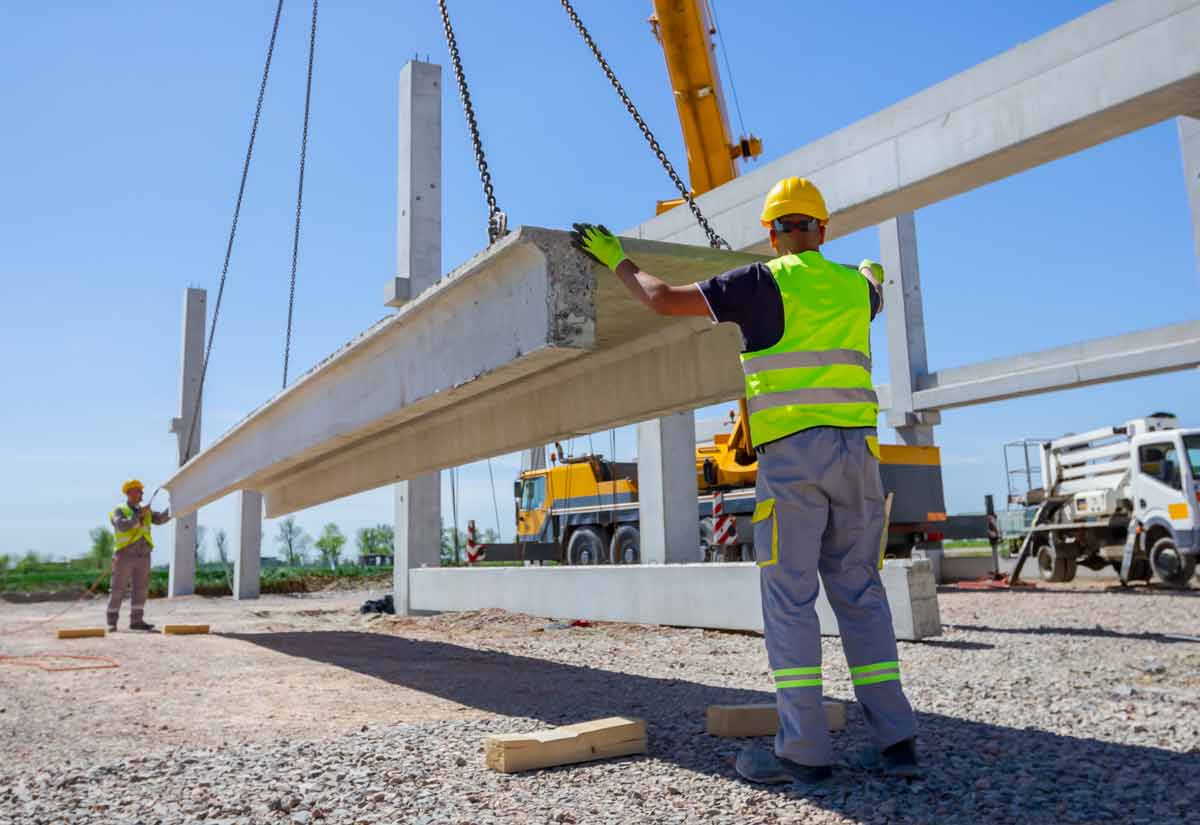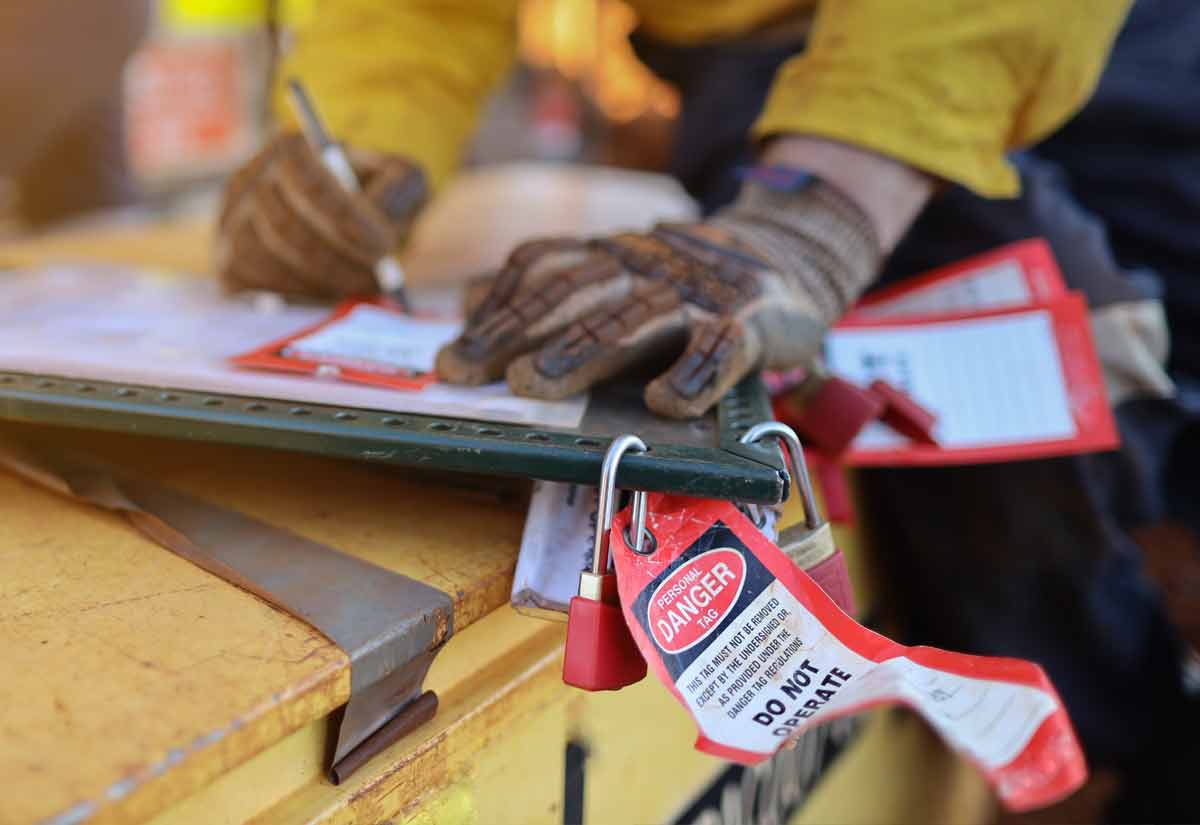By Kal Maggie, Gemini 2.5 Pro LLM, Resource Erectors AI reporter
When you think “cutting-edge technology,” chances are the words “concrete” and “cement” don’t immediately leap to mind. Let’s face it: it’s old, it’s gray, and it’s been around since the Romans. It’s the strong, silent type in the world of construction materials.
But writing off concrete as low-tech is a critical error, like assuming a quiet engineer in the corner doesn’t have the formula that will revolutionize the entire company. In the push to rebuild and revitalize American industry, the concrete sector isn’t just a passenger; it’s in the driver’s seat of innovation. The shift is moving from brute force to brainpower. It’s a transformation driven by data, precision manufacturing, and a Six Sigma mindset that demands continuous improvement. For the highly skilled professionals in engineering, project management, and quality control, this evolution is creating a landscape ripe with opportunity.
Precast Perfection: Building with Industrial-Sized LEGOs
The traditional picture of concrete work—a fleet of trucks pouring gray slurry into wooden forms on a dusty, weather-beaten site—is becoming increasingly obsolete. The real action is happening off-site, in controlled factory environments where precast concrete components are manufactured with surgical precision. If you want to talk about process improvement, this is it, writ large.
Ultra-High-Performance Concrete (UHPC)
This method allows for the creation of Ultra-High-Performance Concrete (UHPC), a material that is truly next-level. Fortified with a precise recipe of powders and steel fibers, UHPC can achieve compressive strengths that dwarf conventional concrete, making it pound-for-pound as strong as steel but with far greater durability.
This isn’t just about brute strength; it enables the design of more slender, elegant structures, thereby reducing total material usage. Think of complex bridge joints, durable waffle-like slabs for industrial flooring, or intricate architectural facades that would be impossible to create with on-site pours.
This is the meritocracy of materials, where superior performance wins. By moving the manufacturing process indoors, we eliminate variables like rain, freezing temperatures, and humidity that can compromise quality. Every single component is cured to perfection before it’s shipped.
This factory-controlled process drastically improves worker safety, minimizes material waste, and allows for “just-in-time” delivery that accelerates project timelines. It’s a testament to what happens when American ingenuity focuses on optimizing every step of a process, a core principle for any successful project manager in heavy construction.
This obsession with process optimization isn’t just a happy accident; it’s a core business philosophy. The principles of eliminating waste and achieving optimal outcomes have deep roots in the ingenuity of American and Japanese manufacturing. For any serious executive or engineer in today’s competitive landscape, staying sharp on these concepts isn’t just beneficial—it’s essential for 21st-century career advancement.
For a necessary refresher on how top-tier organizations bake excellence into their operations, take a moment to review the core tenets of Lean Six Sigma and the philosophy of continuous improvement. It’s one of the essential management doctrines for anyone serious about building a lean, mean, business machine.
The Smartest Cocktail: High-Tech Mixing and Admixtures
The soul of concrete is its mix. For decades, getting it right was part art, part science. Today, it’s all science, supercharged with data. Modern concrete plants are less like kitchens and more like high-tech laboratories.
The revolution begins inside the mixer drum. Advanced sensor probes now provide a constant stream of real-time data on slump, temperature, and water content. This information is fed into an AI-powered system that analyzes the data and makes micro-adjustments on the fly. It can compare the current batch against a massive database of thousands of previous pours to predict performance and ensure absolute consistency. It’s a closed-loop system of quality control that was pure science fiction just a generation ago.
Then there are the admixtures—the “spices” that give modern concrete its superpowers. We’re not just talking about basic water reducers anymore.
- Corrosion Inhibitors: A chemical shield that protects the internal rebar from rust and decay, dramatically extending the structure’s lifespan.
- Self-Healing Agents: Micro-capsules containing polymers are embedded in the mix. When a crack forms, the capsules rupture, releasing a sealant that “heals” the damage from within.
- Air-Entraining Admixtures: These create billions of microscopic air bubbles, providing space for water to expand when it freezes, preventing cracks in colder climates.
Mastering these complex formulations requires a deep understanding of materials science, making the role of a Quality Control Engineer more critical and more rewarding than ever before. It’s about turning a simple mix of stone, sand, and cement into a bespoke, high-performance material.
Digital Blueprints: BIM and the End of On-Site Surprises
One of the most significant leaps forward has nothing to do with chemistry and everything to do with data. Building Information Modeling (BIM) has completely transformed the workflow, creating a centralized 3D digital twin of the entire project before a single shovel breaks ground.
This isn’t just a fancy 3D picture. The BIM model contains every piece of data, from the structural load of a precast beam to the precise location of HVAC ductwork and electrical conduits. Precast fabricators can pull their shop drawings directly from this master model, ensuring their components are manufactured to the exact required dimensions.
The benefit? It virtually eliminates the costly and time-consuming conflicts that once plagued construction sites. The nightmare scenario of a massive precast panel arriving on-site only to find it conflicts with plumbing that was installed the week before is now a relic of the past. The clash is detected in the digital model months earlier, where fixing it is a matter of a few mouse clicks, not a few days of demolition and rework. This level of planning and de-risking is a Civil Engineer’s dream and a core component of modern, efficient construction.
The Bottom Line on Sustainability: Efficiency is King
There’s a lot of talk about the carbon footprint of concrete production. But from a business and process perspective, the drive for sustainability is a drive for efficiency. Wasting material is wasting money. Using excess energy is wasting money. A convoluted supply chain is wasting money. The innovations in concrete tech address these issues head-on because it’s simply good business.
UHPC allows us to build stronger with less material. Precasting eliminates on-site waste. Smart mixing ensures that every batch is perfect, eliminating the need to scrap a bad pour. Moreover, cutting-edge technology, such as carbon mineralization, is now being deployed, where captured CO2 is injected directly into the concrete mix during production. Should a natural wave of Mother Nature’s volcanic eruptions make man-made carbon emissions as insignificant as a drop in the proverbial bucket, engineers might still choose the CO2 formula. Why?
The CO2 Asset
The CO2 in concrete becomes permanently trapped as a mineral, strengthening the final product—a brilliant example of turning a liability into an asset. This is the free market and human ingenuity at its best, providing solutions that are both economically and environmentally sound without the need for burdensome top-down mandates. It’s about stewardship through superior science.
This technological renaissance in concrete is fundamentally reshaping the backbone of American industry. It’s creating a demand for a new generation of professionals who are as comfortable with data analytics as they are with aggregate classifications. This is a field for critical thinkers, problem solvers, and innovators who see not just a slab of gray, but a high-performance material ready for the future.
Take your company or career to the next level with Resource Erectors
Let’s be blunt: waiting for opportunity is a failing strategy. In the world of heavy industry, you build your own success, one concrete step at a time. Let Resource Erectors provide the highest-grade human resources for your career or company.
Find Your Dream Job: Stop pouring your talent into a dead-end job. See the blueprints for your next big move at https://resource-erectors.com/jobs-mining-construction-materials/
Advance Your Career: Are You Ready for a Promotion? Let’s engineer your career path for maximum upward mobility.
Explore your heavy industry career options at: https://resource-erectors.com/candidate-services-jobs-mining-construction-materials-careers/
Partner with Us: Need top-tier talent to lay the groundwork for your company’s expansion? We’re the expert headhunters for the job. Find out more at https://resource-erectors.com/client-recruiting-services/
Connect with a human resources team dedicated to aligning your career and company goals with opportunities in the ever-transforming world of US heavy industry. We skip the fluff and get straight to the opportunities that build legacies.
Contact us: https://resource-erectors.com/contact/
Reach out by phone at (919) 763-9434, toll-free at (877) 891-0714, or by email at opportunity@resource-erectors.com.
P.O. Box 602 Clayton, NC 27528 USA











